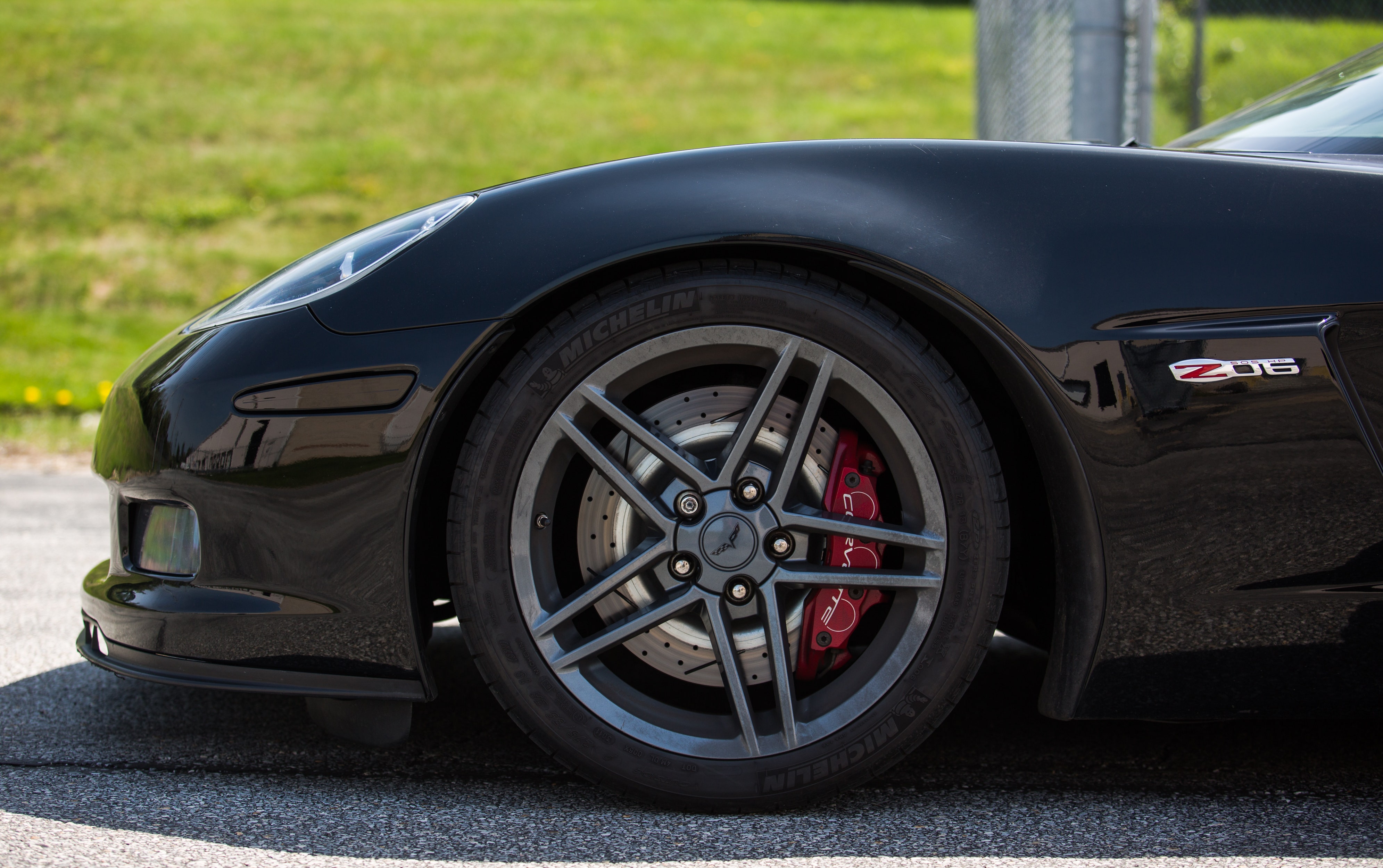
Legendary Cooling - 2005-2012 C6 Corvette Performance Radiator R&D, Part 2 - Design Plans
One would think that after over 50 years of being the pinnacle of American performance some extra thought would have been put into the cooling system. That's not the American way, though. Automotive radiators have vastly improved since 1953, and when it came time for the C5's successor, it's almost as if Chevy was more interested in equipping the largest V8 possible rather than overhauling the cooling system.
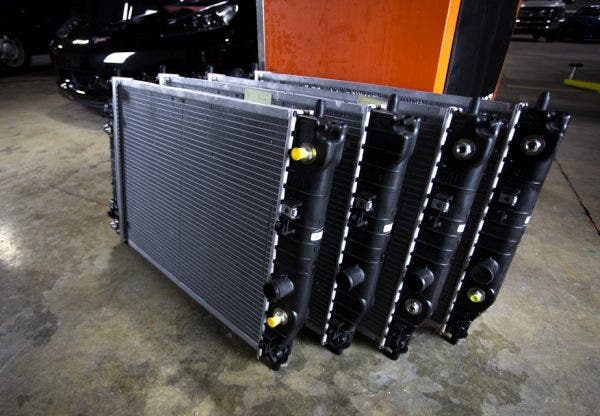
On top of seemingly glossing over the C6's coolant heat exchanger, Chevy couldn't decide which radiator to equip in their flagship sports car. Over this Corvette's tenure we noted that there were 5 different radiators designed for the C6, each one slightly varied from the other.
We noted that there were two different core thicknesses, and about 4 different end tank configurations, all of which really threw a wrench in our plan to create one rad to rule them all. We found, however, that the early model Z51 radiator came fully stocked with the larger core, end tanks, and end-tank transmission and oil coolers, making it the ideal candidate as the base for our new design.
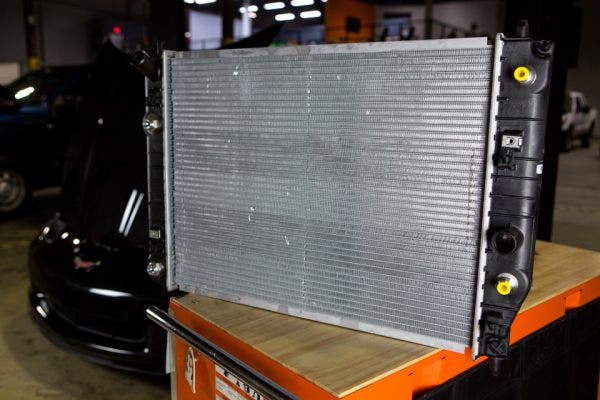
The stock radiator from the Z51 will merely lay the framework, however. We do intend on carrying over several features from this particular heat exchanger, but we're still starting from the ground up with the new design. Specifically, we're starting with the core, since that aspect is doing most of the heavy lifting when it comes to keeping your Corvette cool.
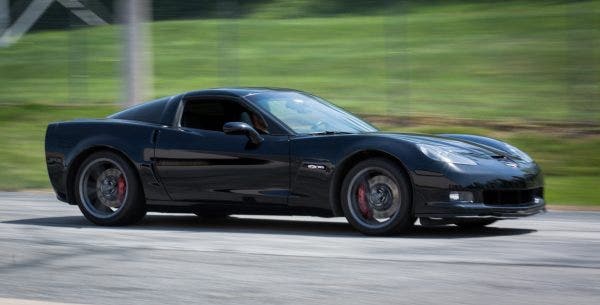
OE manufactured radiators are typically build using B-roll tubes, which more or less is a method to create two tubes from one. The idea is to disperse the hot fluid into two channels to help the transfer of heat. The trouble is, it's still technically one tube that's been pressed into two, so some of that heat will still be shared. The plan for our core is to run a true, two-tube core and increase the total thickness, allowing for more coolant to pass through.
It's not all tubes when it comes to radiators, though. The fins tag in to transfer the heat from the coolant to the fresh air passing through. In order to improve on heat transfer by way of fins, we have to find the right balance of fin height and density. The ideal equilibrium is to have as many fins packed into the core while allowing the air to flow freely through the entirety of the core. Too many fins and we would only be cooling the front half of the radiator, causing even more of an overheating issue. Not enough fins and the air would flow through too quickly and wouldn't pick up enough of the heat from the coolant, continuing the saga of high temps. Armed with our dyno fan and an anemometer, Jason set out to determine the best fin height and density.
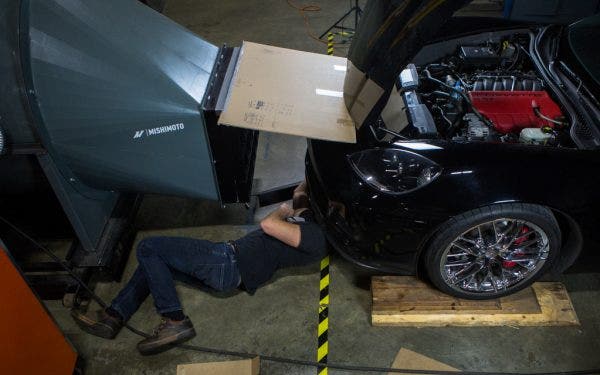
Using our dyno fan, Jason simulated road wind at different speeds to determine the average amount of air passing through the stock radiator.
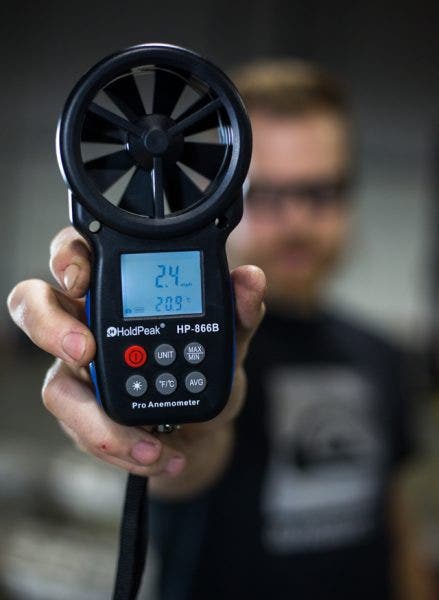
With this anemometer, Jason is able to easily and accurately get readings of wind speed on the back side of the radiator. Basically, we can determine the baseline performance of the stock radiator without even turning the car on.
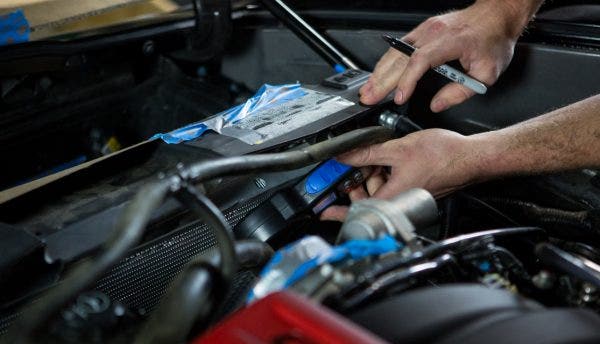
The core isn't the only part that we plan to overhaul. While plastic has revolutionized manufacturing in the modern age, it definitely has its drawbacks, especially when it comes to automotive radiators. The lightweight, and easily mass-produced material is a dream to big manufacturers. However, it will deteriorate over time and has a high potential to spring leaks under heavy stress. Our plan is to ditch the plastic in favor of all-aluminum end tanks, while still carrying over both the transmission and oil coolers in order to cover the wide range of updates the C6 saw over its lifespan.
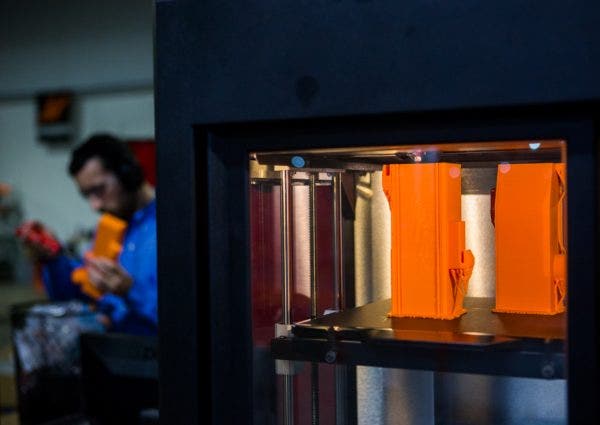
Even though we often rail on using plastic for car parts, the ability to easily 3D print end tank designs speeds up our development process.
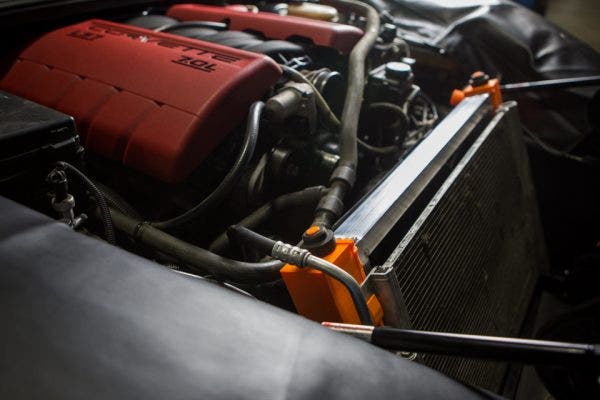
We were able to build the framework of the new design in-house, saving us tons of time in the sampling process
With our bases covered, it was time to bring our new designs to life, and have a production sample produced. For now, our loaner Z06 is hitting the road with its factory given radiator, but with full intentions to return for its chance on the Dynapacks. For a little taste of what's in store once it returns, make sure you check out our latest development video.
Thanks for Reading!
-Nick




